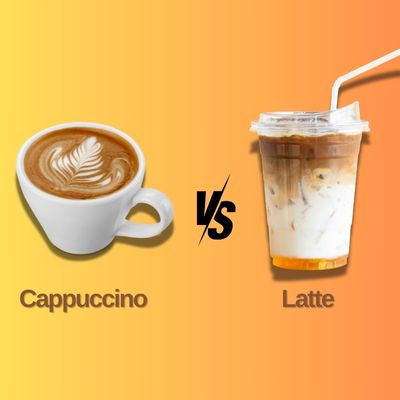Singapore’s food and beverage industry is dynamic and vibrant, poised for strong growth.
Moving upward and undergoing transformative changes, the food and beverage industry is witnessing the emergence of several trends in the food and beverage industry of Singapore. From the rise of health-conscious consumers to innovative technologies, these trends are shaping the industry.
In 2023, the Food and beverage industry recorded a 28.9 percent increase in sales as Singaporeans work long hours and have meals outside the home, and for many, it is a form of enjoyment.
The food market in Singapore is expected to generate US$12.0 billion in 2023, with an annual growth rate of 4.56% (CAGR 2023-2028).
But like all other industries, this industry faces challenges such as energy crisis, sustainability, operational costs, and skill shortage.
Let’s explore the critical trends in Singapore’s food and beverage industry.
15 Food and Beverage Industry Trends in Singapore
Singapore’s food and beverage industry is expected to experience trends shaped by consumers, economies, labor shortages, technological advancements, increased competitiveness, and sustainability.
These latest trends of food and beverage businesses in Singapore reflect the emerging business models driven by consumer preferences.
Let’s talk about the latest trends likely to impact the F&B industry in Singapore significantly.
1. Naturally Healthy Food Choices
According to Data Bridge Market Research, the Asia-Pacific health and wellness food market is forecasted to experience a compound annual growth rate (CAGR) of 9.9% by 2029.
Consumers in Singapore are becoming more health-conscious, focusing more on the nutritional value of food products.
Food and beverage businesses in Singapore must add healthy menu options and ensure the availability of superfoods and functional ingredients. Also, the demand for vegan diets has increased drastically due to increased awareness and health benefits.
2. Upscale Supermarkets Attracting Affluent Shoppers
Affluent shoppers in Singapore are no longer content with run-of-the-mill ingredients and are eager to explore diverse flavors. As a result, they have carved a niche that caters to their tastes and preferences.
These upscale supermarkets are meticulously designed with spacious aisles, elegant displays, and a range of premium and imported items, from specialty teas to artisanal cheeses, appealing to those who value exclusivity over price.
3. Elevated Focus on Sustainability
Sustainability has become a critical consumer concern. According to a survey on eco-label consumer preferences, 19.6 percent of Singaporean consumers are willing to switch to an eco-labeled brand, and 14.5 percent are willing to pay more for eco-labeled food brands.
The elevated focus on sustainability in Singapore’s food and beverage industry is heightened by the increased awareness and adoption of greener practices to meet the evolving demands of environmentally-conscious customers.
4. Convenience Takes Center Stage in Packaged Foods
The convenience food market amounts to US$0.6bn in 2023, with an expected annual growth rate of 1.99% (CAGR 2023-2028). It indicates that convenience food will be vital to snagging a larger share of the average household food budget.
Consumers in Singapore seek convenient, packaged foods that can be easily carried on the go and quickly heated in the microwave or oven. Consumers seek hassle-free options that fit their fast-paced lifestyles and offer time-saving solutions.
5. Rise of E-commerce and Online Shopping
Singapore is one of Asia’s most digitally mature societies, with high internet penetration rates and reasonable access to high-speed internet.
E-commerce is a harbinger of good news for the food and beverage industry, as consumers can conveniently order groceries, restaurant meals, and specialty foods from their devices.
The pandemic has also surged the demand for online shopping and accelerated the pace of e-commerce adoption for the food and beverage industry. With the right, data-rich, and reliable e-commerce platform, food and beverage businesses are set to achieve profitability.
6. Embracing Food Delivery and Takeout Options
The revenue from Singapore’s online food delivery industry is expected to reach US$1.46 billion by the end of 2023.
The food and beverage industry is quick to embrace trends, and even traditional dine-in establishments are adapting to online ordering platforms and optimizing their menus for takeout.
Third-party delivery apps have also flourished, making it easier for customers to access various cuisines. This trend is expected to persist beyond the pandemic as consumers have grown accustomed to the convenience of having restaurant-quality meals delivered to their doorstep.
7. The Post-COVID Impact on the Foodservice Sector
Following years of shutdowns and closures, the food and beverage sector is poised to take center stage, driven by consumer demand, according to the data presented by the Department of Statistics Singapore, SingStats, all industries in the F&B sector recorded a year-on-year growth in 2023, with $1.0 billion in sales value.
Food and beverage businesses in Singapore are undergoing a revival, with significant developments and a focus on sustainability and transparency embedded in the core.
8. Innovative Technologies Shaping the Industry
The cascading effects of the past two years have, like in many industries, put additional pressure on the food and beverage industry to accelerate the adoption of innovative technologies.
Technologies like machine learning and artificial intelligence are taking on new roles, such as optimizing operations, predicting demand, and reducing waste. Food and beverage companies are integrating robotic technologies into their production to meet demand and customer expectations.
Also, early adoption of blockchain technology can give consumers greater confidence in the safety and authenticity of their food.
9. Shifting Economic Growth Driven by Changing Consumer Trends
According to Singapore’s Ministry of Trade and Industry, the economy grew by 0.5 percent on a year-on-year basis in the second quarter of 2023, and the food & beverage services sector grew at 5.7 percent year-on-year growth.
With shifting economic growth closely tied to changing consumer trends, Singapore’s food and beverage industry is experiencing a significant transformation.
While facing these challenges, the F&B industry continues to thrive as a vital cornerstone of Singapore’s economy, providing many opportunities for enterprises of various scales.
10. Navigating Regulatory Compliance and Standards
Several regulatory compliance and standard trends in the F&B industry in Singapore are shaping its landscape, such as increasingly focusing on sustainability, with regulations aimed at reducing food waste, encouraging eco-friendly packaging, and sustainable sourcing of ingredients.
Also, there are more stringent requirements for disclosing nutritional information and health claims and real-time reporting to regulatory bodies, ensuring timely compliance updates. Therefore, it has become imperative for the food and beverage industry to maintain standards.
11. Adapting to Evolving Consumer Preferences
According to the report shared by KPMG, Singaporean consumers are driven by experiential simulation; the rising inflation is having rippling effects on them, and in the wake of the pandemic, they are placing greater emphasis on health-conscious choices.
Consumers are now making more mindful choices with predictable economic recession periods. The food and beverage industry needs to look through multiple drivers of change, as the consumption patterns are like this: people buy less, buy better, and buy in different ways.
12. Sustaining Quality and Consistency
From advanced quality control technologies to cutting-edge tools like AI and machine learning, sustaining quality and consistency has become another critical challenge for the food and beverage industry.
While leveraging the power of data analytics can help businesses anticipate equipment maintenance and issues, the emphasis should also be on employee training and development to enhance skills and adherence to quality standards.
13. Challenges with Escalating Operating Costs
Several trends and challenges converge around the escalating operating costs that businesses in the F&B industry are grappling with are escalating.
Firstly, labor costs have surged due to inflation and Singapore’s government to raise the minimum wage. Secondly, rental expenses continue to climb.
Additionally, the ongoing emphasis on sustainability pushes businesses to invest in eco-friendly practices and materials. And the pandemic has already introduced another layer of complexity related to health and safety regulations.
Supply chain disruptions and volatile commodity prices have increased ingredients, packaging, and transportation costs.
14. Shortages in Labor and Skills
Singapore’s food and beverage industry heavily depends on foreign labor, but recent stringent government policies have resulted in a shortage of skilled workers. Recruiting and retaining qualified staff has become a formidable challenge for food establishments.
The demand for skilled workers outpaces the available workforce, presenting challenges for businesses in on-demand skills and knowledge.
15. Intense Competitiveness in the Market
The F&B industry in Singapore is faced with intense competition, with many participants vying for market share.
The emergence of several trends and the continued increase in competition among restaurants and cafes present an ongoing challenge for established businesses to retain their market standing and set themselves apart.
This dynamic landscape challenges existing businesses to continually innovate and differentiate themselves to maintain their market presence and thrive in this highly competitive environment.
Conclusion
Several key trends in Singapore’s food and beverage industry are shaping a new and dynamic landscape that has never been witnessed before. With the heightened competition, opportunities, and challenges, the industry is continually evolving to meet the demands and expectations of consumers.
There is a growing emphasis on innovation and differentiation to stand out in a saturated market and resonate with the consumers. Singapore’s food and beverage industry is navigating a competitive environment by focusing on innovation, differentiation, digitalization, and sustainability.








